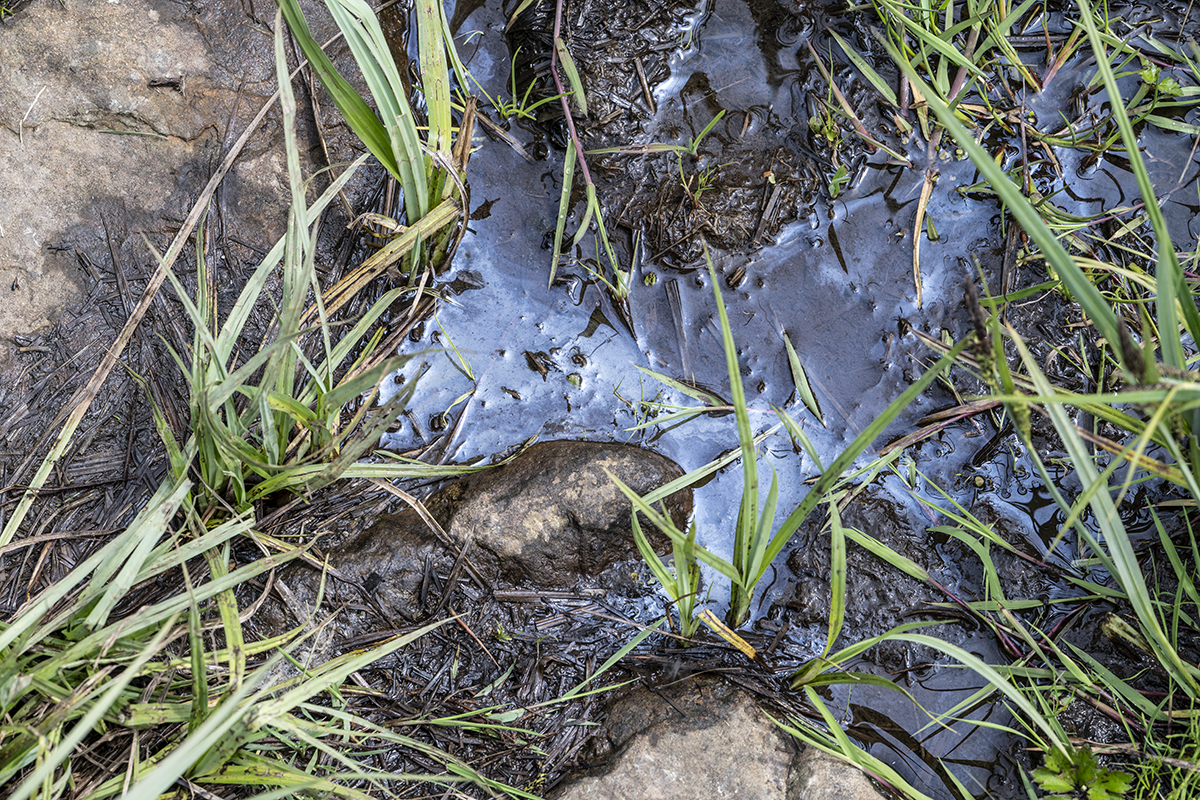Methane
Anaerobic marsh

Above: A blue film of mainly methane, or marsh gas, on the surface of a marsh. Galeclose Beck, Hargill, Redmire. Methane, under these circumstances, is produced by micro-organisms called Archaea, anaerobically (without oxygen). Ideas about classification of living thing are frequently revised, but current thought tends to group organisms into three fundametal categories. They are Bacteria (with Cyanobacteria), Archaea, and Eukarya. Eukarya have more complex cells and range from microscopic protists to all fungi, plants and animals. Archaea are microscopic organisms originally known from extreme environments such as deep ocean hydrothermal vents. They are now recognised as being present in most environments, including the digestive systems of cattle, accounting for their production of methane. Methane is a potent greenhouse gas.
Below: Various organisms found in a sample of liquid taken by pipette from the above pool.
Slide 1: Decaying plant cells with grey coloured micro-organisms, possibly Archaea. Photographed at x1000, brightfield illumination, oil immersion. Collected by pipette from a marsh at Galeclose Beck, Redmire. June.
Slide 2: Decaying plant cells with grey coloured micro-organisms, possibly Archaea. Photographed at x1000, brightfield illumination, oil immersion. Collected by pipette from a marsh at Galeclose Beck, Redmire. June.
Slide 3: Decaying plant cells with a Nematode worm (bottom left). Photographed at x400, brightfield illumination. Collected by pipette from a marsh at Galeclose Beck, Redmire. June.
Slide 4: Dead Gastrotrich with microbes inside, possibly either Bacteria or Archaea. Photographed at x1000, brightfield illumination, oil immersion. Collected by pipette from a marsh at Galeclose Beck, Redmire. June.
Slide 5: Paramecium bursaria, a protist, with shell of dead Diatom. Photographed at x1000, brightfield illumination, oil immersion. Collected by pipette from a marsh at Galeclose Beck, Redmire. June.
Slide 6: Paramecium bursaria, a Protist. Photographed at x1000, brightfield illumination, oil immersion. Collected by pipette from a marsh at Galeclose Beck, Redmire. June.





